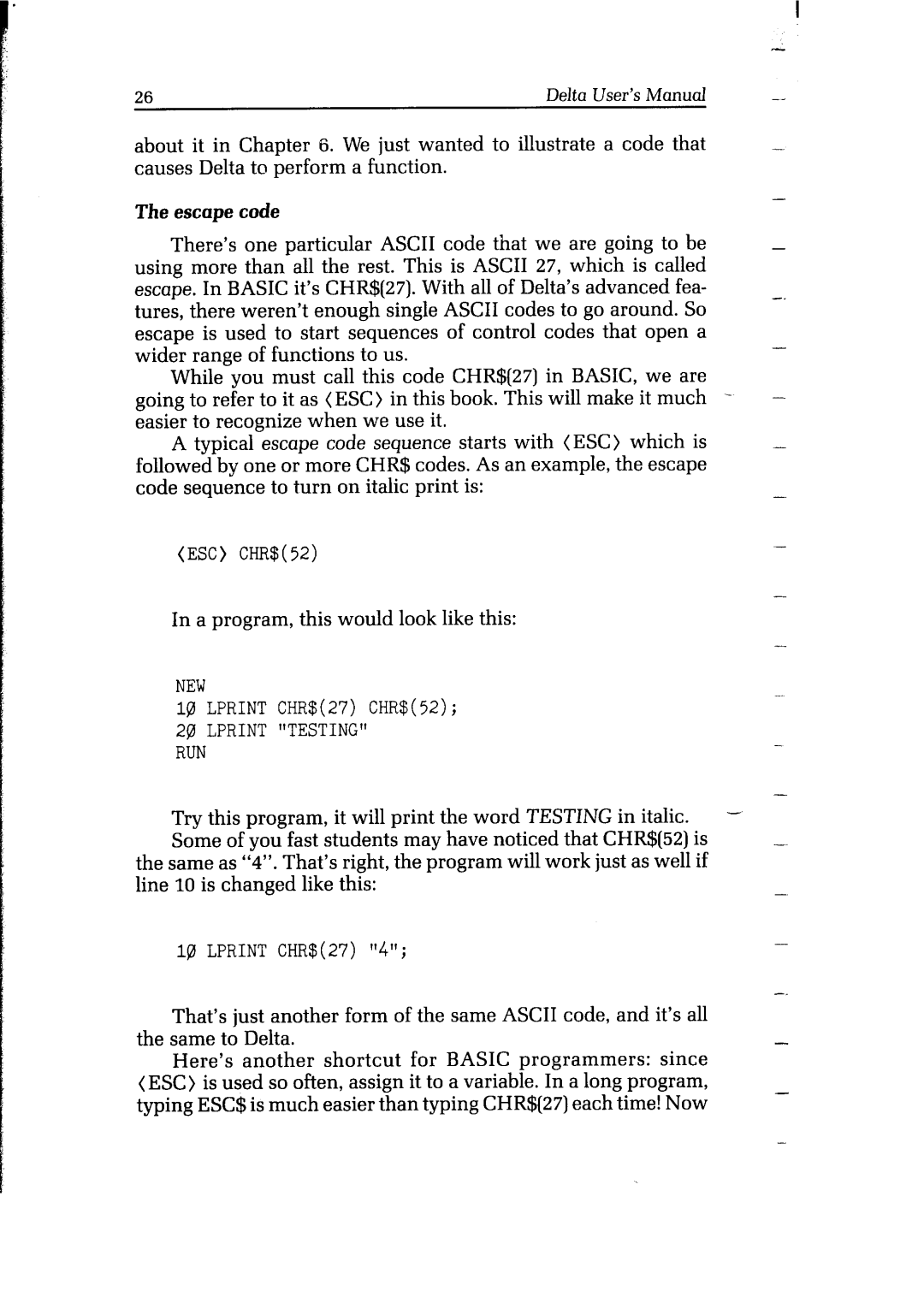
26 | Delta User’s Manual |
about it in Chapter 6. We just wanted to illustrate a code that causes Delta to perform a function.
The escape | code |
|
|
| |
There’s | one particular | ASCII code that we are going to be | - | ||
using more than all the rest. This is ASCII 27, which is called |
| ||||
escape. In BASIC it’s CHR$(27). With all of Delta’s advanced fea- |
| ||||
tures, there weren’t enough single ASCII codes to go around. So |
| ||||
escape is used to start sequences of control codes that open a | - | ||||
wider range of functions to us. |
| ||||
|
| ||||
While you must call this code CHR$(27) in BASIC, we are | - | ||||
going to refer | to it as (ESC) | in this book. This will make | it much - | ||
easier to recognize when we use it. |
|
| |||
A typical | escape code | sequence starts with (ESC) | which is | - | |
followed by one or more CHR$ codes. As an example, the escape |
| ||||
code sequence | to turn on italic print is: |
| - | ||
(ESC) | CHR$(52) |
|
| - | |
|
|
| |||
-
In a program, this would look like this:
-
NEW
18LPRINTCHR$(27)CHR$(52); 2$3LPRINT "TESTING"
RUN
-
-
Try this program, it will print the word TESTING in italic. | - |
Some of you fast students may have noticed that CHR$(52) is |
|
the same as “4”. That’s right, the program will work just as well if |
|
line 10 is changed like this: |
|
-
-
lpiLPRINTCHR$(27)"4";
That’s just another form of the same ASCII code, and it’s all the same to Delta.
Here’s another shortcut for BASIC programmers: since (ESC) is used so often, assign it to a variable. In a long program, typing ESC$ is much easier than typing CHR$(27) each time! Now
